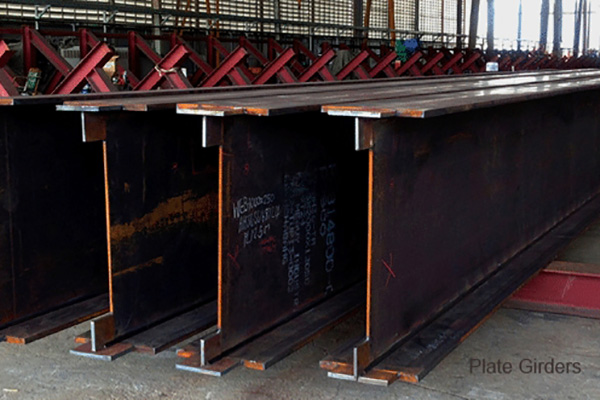In the field of structural engineering and construction, the terms beam and plate girder are often used to describe components that support loads and span horizontal distances. While they may serve similar functions, these two structural elements differ significantly in design, construction, application, and performance. Understanding the difference between a beam and a plate girder is essential for engineers, architects, and anyone involved in building design and construction.

What Is a Beam?
A beam is a structural element designed to resist bending forces and support loads perpendicular to its length. Beams are one of the most fundamental building components and are used in everything from small residential homes to large bridges and skyscrapers.
Beams are typically:
-
Prefabricated in standard sizes, such as I-beams (also known as wide-flange or H-beams).
-
Made from steel, concrete, wood, or a combination of materials.
-
Designed to carry moderate loads over relatively short spans.
In structural steelwork, beams are usually rolled sections manufactured by steel mills. Their cross-sections are standardized, and they are widely used for typical building applications like floor joists, roof supports, and bridge decks.
What Is a Plate Girder?
A plate girder is a type of beam, but it is built up from steel plates rather than being a standard rolled section. A typical plate girder consists of:
-
A web plate (the vertical section that resists shear forces),
-
Flange plates (horizontal top and bottom plates that resist bending),
-
Sometimes stiffeners (vertical plates added to increase shear strength).
These components are welded or bolted together, allowing engineers to design girders of nearly any size and strength.
Plate girders are used when:
-
Standard beams are not sufficient for the span or load,
-
Custom shapes and sizes are required,
-
The structure must carry heavy loads over long spans, such as in bridges, industrial buildings, and large-span roofs.
Key Differences Between Beam and Plate Girder
| Feature | Beam | Plate Girder |
|---|---|---|
| Construction | Rolled section (pre-made in factories) | Built up from individual steel plates |
| Customization | Limited to standard sizes and shapes | Fully customizable in size and strength |
| Load Capacity | Suitable for light to moderate loads | Designed for heavy loads |
| Span Length | Typically used for shorter spans | Ideal for long-span applications |
| Cost | Less expensive due to standard production | More expensive due to fabrication needs |
| Weight | Lighter, easier to handle and install | Heavier and may require cranes or rigging |
| Use Cases | Homes, offices, small bridges | Bridges, stadiums, industrial facilities |
When to Use a Beam vs. a Plate Girder
-
Use a standard beam when dealing with short to medium spans, light to moderate loads, and when cost and simplicity are priorities.
-
Choose a plate girder when your structure involves heavy loads, long spans, or custom structural demands that go beyond the limitations of rolled steel sections.
For example, in bridge construction, plate girders are preferred because they can be designed to span over 100 feet with tailored strength and stiffness. In contrast, residential construction typically uses rolled beams because the spans and loads are relatively small.
Conclusion
While both beams and plate girders serve the purpose of supporting structural loads, the key difference lies in their construction and application. Beams are ready-made and ideal for general-purpose building needs, while plate girders are engineered solutions for specific, demanding applications. Choosing between the two depends on factors such as load requirements, span length, budget, and the complexity of the project. Understanding these differences ensures that each structural component is used efficiently and safely in the construction process.
Post time: Jun-12-2025



